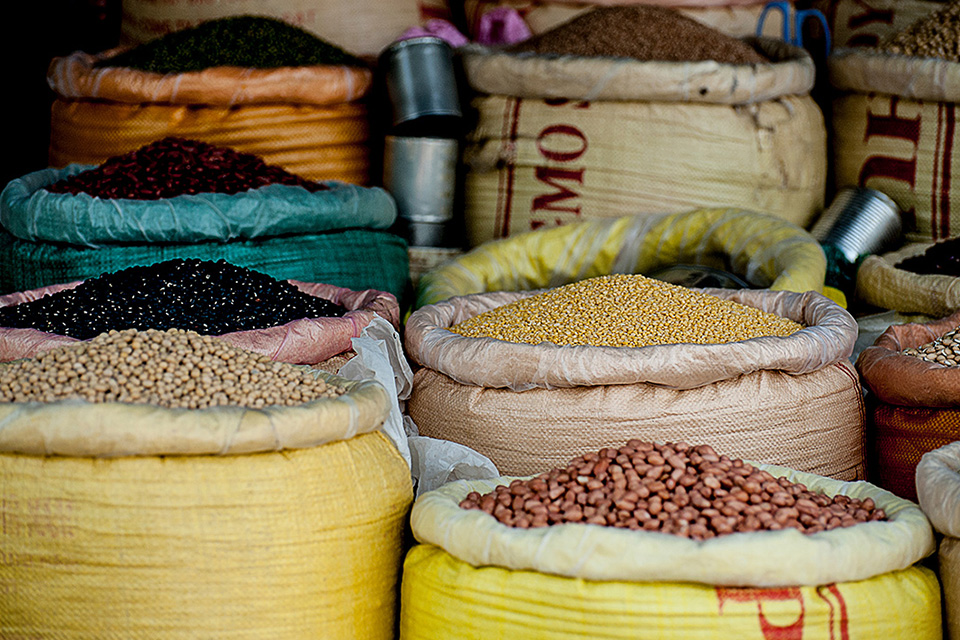Protein is fundamental to human bio-chemistry. It is also a huge topic of conversation with diverging opinions. Some suggest we need as much as 150 grams per day, particularly competitive athletes and those building muscle mass. Public health agencies suggest a DRI (Dietary Reference Intake) of 56 grams for the average man and 46 grams for the average woman. Yet people with health and longevity the world over consume less and typical vegans consume much less.
Consensus on the best sources of protein is equally illusive. Some suggest no animal products at all. Others say meat is the best way to derive the level of protein necessary. Those in gym culture along with many high performing athletes often promote concentrated protein supplements like whey or casein powders.
Trending To Less Meat
A growing number of people are opting to limit their consumption of animal products or avoid eating them all together. This decision is usually driven by a desire for better health, but may also be part of a lifestyle.
Here in Vancouver vegetarian and vegan restaurants generally do very well. The Naam, Natural Foods Restaurant was launched in 1968 and is open 24 hours a day, 7 days a week. There are line ups at peak hours.
So, whether you’re a hard core carnivore, or a pine cone crunching vegan, how do you optimize plant based protein? As this knowledge eludes so many, let’s break it down… literally.
Protein – a brief definition
When protein is consumed the body breaks it down into it’s constituent parts called amino acids, the building blocks of all proteins.
In the form of proteins, amino acids make up the second-largest component of human muscles, cells and other tissues, after water. While there are over 500 amino acids in nature, the human body only encodes twenty. Of these, twelve are called “non essential” only because the body manufactures them. The other eight are considered “essential” as they must be derived from the food we eat.
List of Essential Amino Acids:
1. valine
2. leucine
3. isoleucene
4. methionine and cysteine
5. phenylalanine and tyrosine
6. tryptophan
7. threonine
8. lysine
Note – A ninth amino acid, histidine, is essential for very young children, whose bodies are not yet mature enough to manufacture it.
Note – Methionine and cysteine as well as phenylalanine and tyrosine are grouped together because if your body has enough of one of them, it can change part of the excess into the other if needed.
There are two types of proteins:
1. Complete proteins contain all the amino acids in sufficient levels.
All animal based proteins are considered “complete” but they can also bring certain liabilities when consumed in excessive amounts, such as high levels of saturated fat. Growth hormones, preservatives and residual amounts of antibiotics are also common bi-products of industrial meat and poultry production.
Extensive research confirms that “small amounts of red meat, especially processed red meat, on a regular basis is linked to an increased risk of heart disease and stroke, and the risk of dying from cardiovascular disease…” Too much protein can also be hard on the liver and kidneys.
Why Eating Less Red Meat May Help Your Heart
http://www.webmd.com/heart-
2. Incomplete proteins are deficient in one or more essential amino acids.
All plant based proteins are considered “incomplete.” Understanding the science behind incomplete proteins is crucial for vegans and vegetarians, because the lowest level of any essential amino acid will limit the useable amount of all the essential amino acids.
This is called Leibig’s Law of the Minimum: “The lowest level of any of the essential amino acids will be the limiting factor in metabolism.”

The Secret
Anyone interested in increasing or maximizing their intake of plant based protein must understand Leibig’s law of the minimum. When eating plant based proteins, it is necessary to combine your proteins strategically.
This is called mutual supplementation. If plant based proteins are properly combined, they can become a complete protein. This is the objective!
Given that protein is a necessary part of every cell in the body and critical in so many cellular functions, it is paramount that we get quality protein.
According to The Harvard School of Public Health, “protein malnutrition leads to the condition known as kwashiorkor. Lack of protein can cause growth failure, loss of muscle mass, decreased immunity, weakening of the heart and respiratory system, and death.”
To illustrate this point, a friend and high performance athlete bulked up for sports with a high protein meat diet. He was eventually diagnosed with high blood pressure, arteriosclerosis (blocked arteries) and diabetes, so decided to try a vegan diet. After 2 months of following this regimen diligently he lost 13lbs – but it was all muscle mass. This is called “muscle atrophy” – literally wasting away. He didn’t know about balancing his plant based proteins.
Creating Complementary Proteins
Combining plant based protein is quite simple. People from virtually every culture do it intuitively. To make a complete protein, combine foods from two basic food types as follows:
1. Cereal grains and grasses; nuts and seeds:
– amaranth, barley, buckwheat, cornmeal, maize, millet, oats, quinoa, rice, rye, spelt, wheat, etc.
– almonds, cashews, filberts, hazelnuts, pecans, pine, pistachio, walnuts, etc.
– pumpkin, sesame, sunflower; hemp, flax, chia, etc.
This side of the equation are generally high in methionine and cysteine but low in lysine or sometimes tryptophan.
2. Legumes, vegetables
– beans (all), lentils, peanuts, peas
– artichoke, kale, mushrooms, spinach, etc.
This group are generally high in lysine but low in methionine and cysteine.
Further
There is very little research available on the absolute best ratio for optimizing useable protein, but 7:3 is generally a good estimate when combining cereal grain or grasses with legumes.
The ratio for nuts or seeds to legumes will be different.
A final note on mutual supplementation. The combinations don’t even need to be eaten in the same meal. If you eat complementary proteins throughout the day, the body will still sort and stack the amino acids through the amazing biological process of transcription and translation called protein synthesis.
BuzzFeed – 23 Vegan Meals With Tons Of Protein
Summary
Creating plant based complementary proteins is really quite simple. Almost every culture seems to have practiced this nutritional art intuitively and the best culinary examples are already central to ethnic foods.
For optimum health though, like so many things in life, it’s not about the quantity, but rather the quality of protein that matters.
Video Clips:
Teachers Pet – Protein Synthesis
http://youtu.be/2zAGAmTkZNY
Resources:
• Protein, The Nutrition Source, Harvard School of Public Health
Do You Need Protein Powders?
http://www.webmd.com/vitamins-
• Diet For a Small Planet, Francis Moore Lappé
• Nutritional Healing, 3rd Edition
• Self NutritionData / nutritiondata.self.com
• Virtual ChemBook, Elmhurst College – Protein Synthesis
• The Worlds Healthiest Foods – whfoods.org
• Strong Women Eat Well, Strategies For a Healthy Body, Miriam E. Nelson, Penguin Books

